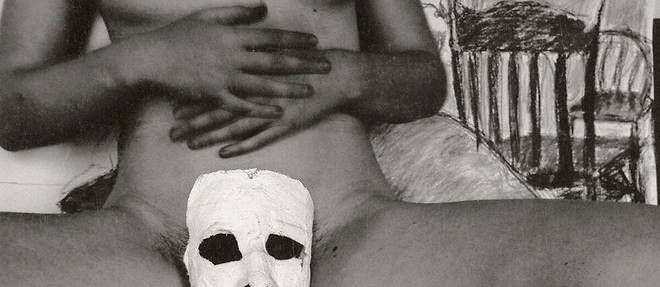After the men…the women! Just one year after the “Masculinities” exhibition, organized by the Barbican Art Gallery in Arles, a major retrospective is devoted in the same place* to “the feminist avant-garde of the 1970s”. It brings together nearly 250 photos from the Verbund collection in Vienna, established since 2004 on the initiative of Gabriele Schor. The art historian, at the origin of this collection which now has nearly 900 pieces, explains that she wanted to “highlight the work of 71 women who testify to a community of views and aspirations that go beyond traditional cultural and social divides”.
Born between the 1930s and 1950s, the selected photographers renew the way of asserting what is commonly called femininity. They form a generation driven by the desire to translate in a plastic way the absolute refusal to conform to a role-playing game that locks them into a gendered definition of their identity. “Beyond the diversity of their looks, these women are simply saying that they want to free themselves from the dictates imposed on them by the patriarchal society. They claim the right to express it, “continues the curator of the exhibition, who regrets that an assignment to be silent has sometimes been imposed on them even in art schools.
“By using photography, that is to say a new medium not yet dominated by men, to denounce the shackles in which they feel cramped, these artists are betting on the strength of a mode of expression that privileges spontaneity and immediacy to question stereotypes sedimented by the centuries”, continues Gabriele Schor.
The patterns are recurrent in several of them. Women’s bodies often give way to those of men. Curved and often (gratuitously) bare, the female silhouettes seem crushed by male expectations which are expressed in the double form of sexual submission and enslavement to domestic tasks. It is only when they are laid down (dead or offered) that they seem able to escape it. Long hair hinders gestures when it does not conceal faces. Clothes also bind. As for the frames, they confine. Including those of doors and windows. What wonder when smiles freeze?
“After the Second World War, conservative ideas and values propagated, as always, a feminine ideal which should have no other concern than the care of the household, the education of children, the comfort of the husband and the respect of the moral principles”, notes Elaine Shemilt, co-author of the catalog (Delpire editions) which accompanies this exhibition.
The photos on display unanimously reflect the desire of women to escape from the hut where they have been confined for too long. “Challenging the codes of femininity, the images we have selected also denounce the discrimination to which they are subjected. This protest discourse is coupled with the affirmation of another desire: a freely chosen sexuality and a right to pleasure finally recognized, ”says Gabriele Schor.
The work of Francesca Woodman occupies a central place in this vast panorama. The American photographer, who tragically passed away in 1981 at the age of 22, stages her rage in the face of the aesthetic standards of the time: these canons expressed, in an outrageous way, by the juries of beauty contests like advertising images.
Denounced both by Annette Messager in her series on the “voluntary tortures” that young girls inflict on themselves from an early age to “get ready”, this formatting is also criticized by Cindy Sherman. Which dynamites with relish the pregnant clichés in the matter: adopting poses a thousand times seen but carefully underlining their ridiculousness. The same approach with Rita Myers who uses cut-outs and collages (“Body Halves”) to evoke the inaccessible perfection of bodies. The self-portraits of Ana Mendieta, who photographs herself with her face glued to glass distorting her features, respond to the same objective. They also seem to echo those of Birgit Jürgenssen, who poses, herself, the face placed on a transparent wall, disfiguring it slightly.
“The point here is to point out the crude manipulation of asserting that the transformations imposed on the flesh will make it more desirable. Where, in reality, these interventions alter the female body and ultimately turn it into something monstrous,” concludes art historian Jane Blocker.
*General Mechanics, until September 25. https://www.rencontres-arles.com/


















